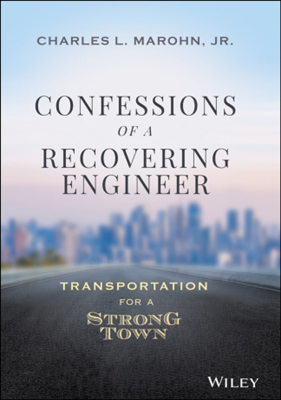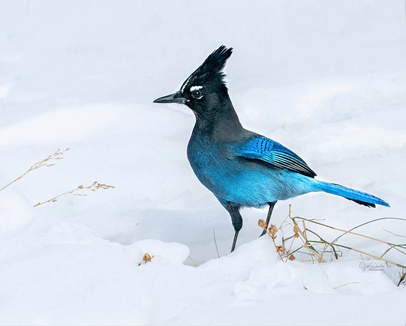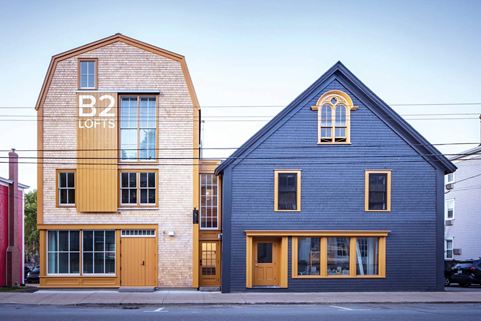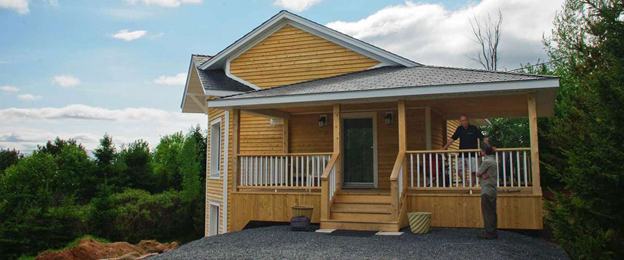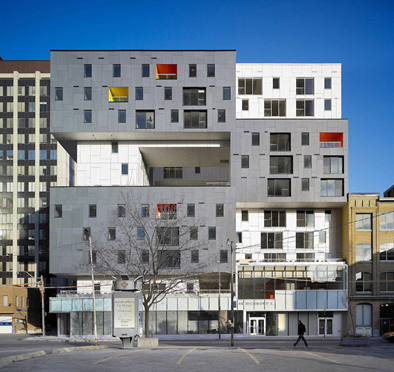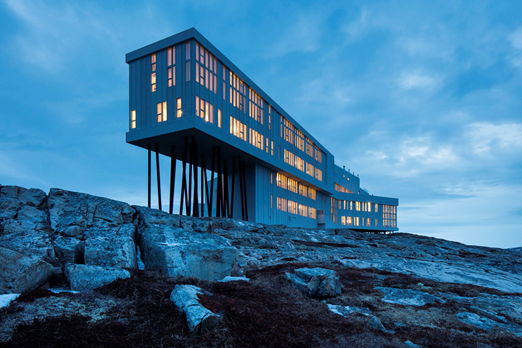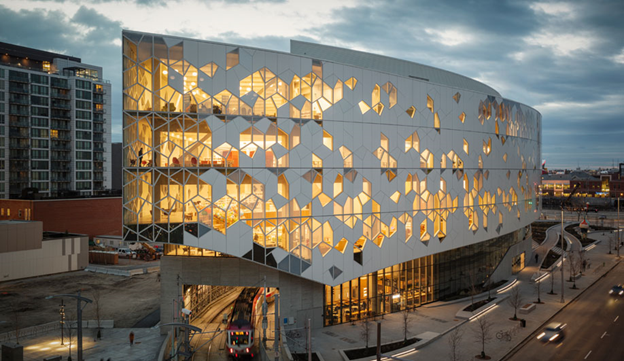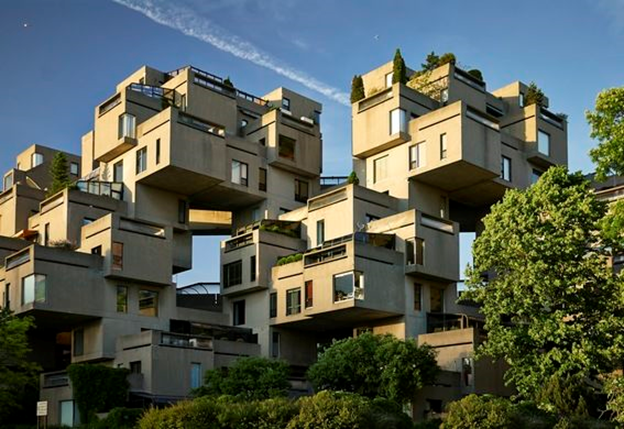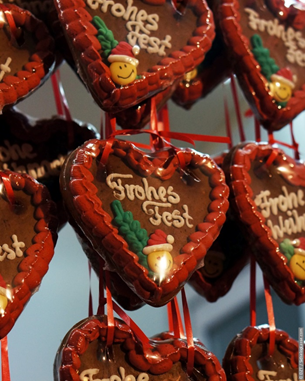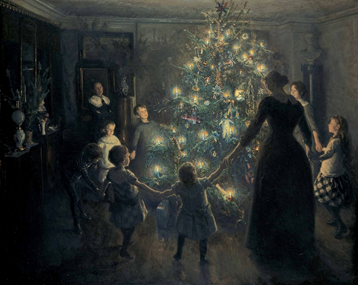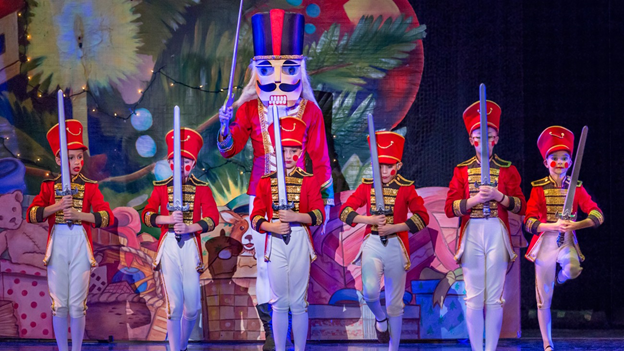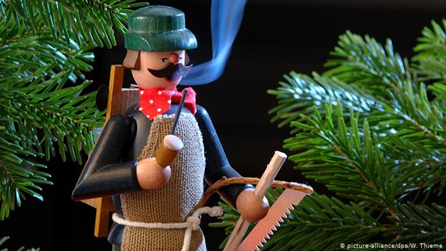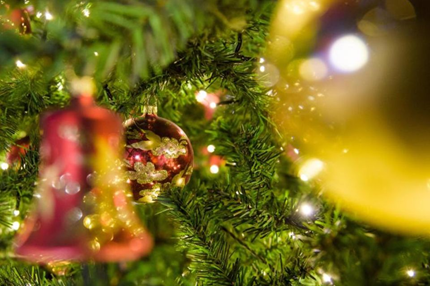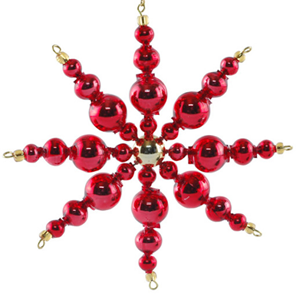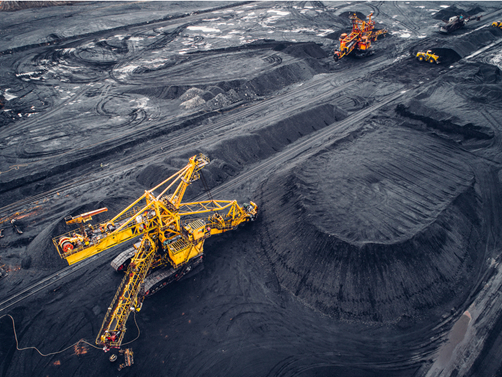Recovering engineer, a sort of book review
I just finished reading Charles Marohn’s Confessions of a Recovering Engineer, which came out last year. It’s a totally satisfying book about all that is wrong about transportation planning in our cities. Marohn wrote the book based on a blog he wrote, which went viral. From the blog:
When they [members of the public] objected to the cost of the wider, faster, treeless road that would turn their peaceful, front yard into the viewing area for a drag strip unless they built a concrete barricade along their front property line, I informed them that progress was sometimes expensive, but these standards have been shown to work across the state, the country and the world and I could not compromise with their safety.
In retrospect I understand that this was utter insanity. Wider, faster, treeless roads not only ruin our public places, they kill people. Taking highway standards and applying them to urban and suburban streets, and even county roads, costs us thousands of lives every year. There is no earthly reason why an engineer would ever design a fourteen-foot lane for a city block, yet we do it continuously. Why?
The answer is utterly shameful: Because that is the standard.
I first heard about this book from Jason Slaughter’s series of videos called Not Just Bikes. Slaughter has digested the contents of the book (as well as the first one by Marohn called Strong Towns written in 2019) and produced a series of short videos. They take a bit of work to find them on line, so here are the links in the right order:
https://www.youtube.com/watch?v=y_SXXTBypIg number 1
https://www.youtube.com/watch?v=VVUeqxXwCA0 number 2
https://www.youtube.com/watch?v=7IsMeKl-Sv0 number 3
https://www.youtube.com/watch?v=XfQUOHlAocY number 4
The videos are just fabulous and explain clearly what the idea behind Strong Towns is, and why cities are addicted to stroads and suburban sprawl in a sort of Ponzi scheme. If you watch only one video, watch this one below (about Lafayette LA):
I mentioned stroads. A quote from the book:
A road is a high-speed connection between productive places, while a street is a platform for building wealth within a place. A stroad is a street-road hybrid, a transportation investment that attempts both to move traffic quickly and build wealth while failing at both, a combination that makes stroads expensive to build and maintain, low in financial productivity, and dangerous for everyone.
In another part of the book is an analysis (page 116) which was a real eye-opener for me. During the second quarter of 2020, despite a drop of 46% in traffic compared to pre-Covid 2019, there was a fatality rate of 1.42 death per million miles traveled, compared to 1.06 in 2019. Congestion had disappeared, and drivers were going faster. “With the virus-induced dropped in traffic volume, what is being revealed is the incredible level of overengineering and unsafe design that occurs throughout our entire transportation system. Speed goes up, and so do the fatalities.”
Indeed, “the traffic fatality rate is much higher during periods of low congestion. This is not because aberrant members of the public time their trips to avoid congestion. It is because the transportation system is designed to be really dangerous, and traffic congestion…is masking just how dangerous it is.”
(There has also been an increase in serious cycling accidents during the pandemic in Canada. Predictably, authorities blame the situation on the increase of cycling, especially by novice cyclists. No mention of the poor design of bike lanes or their complete absence.)
Marohn manages to tie transportation issues with the Black Lives Matter movement in a most unexpected way, in a chapter entitled The Routine Traffic Stop. Cops take advantage of the fact that roads (or stroads) naturally induce people to speed to make targeted, profiled stops. (Marohn himself, white and middle-aged though he is, found that he could predict a cop’s behaviour depending on whether he was wearing a tie or not.) He writes:
If a high percentage of people are speeding along a stretch of road, either the speed limit is wrong, or the road design is wrong. For widespread speeding on a street, there are not even two options. If a significant number of drivers on a street are speeding, the design is wrong and it must be changed.
At any rate, it is an important and enjoyable book that I highly recommend. I’m also encouraged by the fact that I’m not the only one thinking so; the copy I read is from Vancouver Public Library, and I had to wait to get. As for Strong Towns, I’m still number 17 on the wait list. I’m not the only transportation nerd around, and that’s good. Ultimately, it’s about better ways of spending tax dollars than on place-destroying (to say nothing of pedestrian-killing) stroads.
Georg Steller, the German who named the wildlife of the BC coast
Everybody in BC has seen a Douglas Fir and may know that it was Scottish botanist David Douglas who named it. Everybody has also seen a Steller’s Jay – newcomers mistake them for blue jays – but who was Steller? Few people know that he was a German naturalist, a member of Bering expedition from Russia. It’s a story well worth telling.
Georg Steller was born in 1709 near Nuremberg, the son of a Lutheran cantor. His family was able to afford tuition for him in the universities of Wittenberg and Halle, where he studied botany and medicine (the two being joined by the recognized importance of herbal remedies). He worked part-time in an orphanage in Halle, then on to Berlin, but work was hard to come by.
In Berlin he heard about the then-new Russian Academy of Sciences and thought it would be worth a try. As he couldn’t afford the ship to St Petersburg, in 1734 he made his way by land towards the Russian army then fighting in Poland in the war of Polish succession. He was hired as a regiment doctor and parlayed this experience into a position of adjunct professor of natural history at the academy.
In Russia Steller met fellow German Daniel Messerschmidt and from him learned about Siberian exploration. Messerschmidt was back from an expedition tasked with creating good maps, identifying mineral resources, and documenting any new plants or animals encountered. He described the expedition to Steller in favorable terms – but he was by then in frail health and would soon die, leaving a young widow, Brigitta von Böchler, whom he had just married after coming back from Siberia. Steller got more than an insight into expeditions from Messerschmidt; in 1737, the same year he was offered a permanent position at the academy, Steller married Brigitta.
Steller and Messerschmidt were among a large number of German scientists who had been invited to jump-start the Russian Academy of Sciences by Peter the Great, a policy continued by his successors. Academy staff included mathematicians Jakob Hermann, Christian Goldbach, Friedrich Christoph Meyer, physicists Georg Bernhard Bulfinger and Christian Martini, and historians Johann Kohl and Gerhard Friedrich Muller, among others. Others came but only stayed for a few years, including mathematician Leonhard Euler and explorer extraordinaire Alexandre von Humboldt. This was an unprecedented instance of transfer of knowledge; famous Russian explorers such as scientist Mikhail Lomonosov got their initial training there. This is even more remarkable considering how far Russia had come; as recently as 1676 a mob had invaded the house of one Artamon Matyeev, searching for a book alleged to contain Arabic numerals – and thus deemed heretical.
Saint-Petersburg was a hive of intellectual and scientific activity, but Steller was itching to get away and go on an expedition himself. In 1739 he volunteered for the second expedition of Vitus Bering, which had already set out overland one year prior. Steller and Brigitta set out but Brigitta had a change of heart; remembering how Siberia had destroyed her first husband’s health, she had a change of heart and went no further than Moscow. Steller was heartbroken but continued nonetheless. They were never to meet again.
Steller proceeded to Irkutsk, exploring around lake Baikal, collecting and identifying about 500 new plants, a pattern of activity that would continue his whole life. He traveled then to China (over mountains during winter) in order to procure paper to mount his plant collection, a two-month long round trip. Then on to further eastern Siberia, going by sled to the Lena River. After the ice breakup Steller travelled by water nearly 2000 kilometers to Yakutsk, where he hoped to join Bering. Bering, however, was already in Okhotsk, another 800 kilometers further east, organising the construction of the ships he would use for his second pacific expedition. Steller procured horses in Yakutsk to make his way to Okhotsk over the Szhugdzur mountain range.
Along his way he met Martin Spangberg, who would eventually accompany him to Kamchatka. Spangberg was a Danish naval officer who had accompanied Bering in his earlier Kamchatka expedition, and had gone on to his own explorations. He was on his way back to Saint Petersburg when he found he had been ordered to return and “redo the work properly”. This was typical of the academy; enlightened as it may have been scientifically, it was a nest of petty rivalries and bureaucratic in-fighting. Scepticism and disbelief had greeted the news of the discovery and mapping of the Kuril Islands by Spangberg. Steller himself was to be victim of such machinations later. (He was already in hot water with Gmelin, his superior, over precedence in the discovery of Siberian plants.)
Finally arriving in Kamchatka, Steller was welcomed by Bering as a medical officer, but his talents as naturalist were unappreciated. There was also some animosity in the crew because Steller had a high regard for the Itelman natives; he befriended them, learned their language, studied their fishing and hunting techniques, as well as their ceremonies and rituals. He organised a school for the children and became a godfather to one of them. In Halle Steller had been educated in the Pietist tradition of social justice, and these lessons served him well in Kamchatka. The knowledge he gained from the locals proved invaluable later in the expedition, even though he was at first ostracized by the crew for getting an Itelmen out of a primitive jail – Steller thought that the rationale for his detention was capricious and racist.
The expedition finally left for unknown eastern shores, which we know now as the Aleutian Islands and mainland Alaska. One of the landings was on Kayak Island. Steller was able to compare the food habits of the Kamchatka natives and those of Kayak and concluded that native Americans were likely to have come from Asia, the first ever to make that hypothesis. Later, on the Shumagin Islands Steller harvested a supply of green plants which he would feed to anyone who would eat them; he had learned from the Kamchatka Itelmen about scurvy and its treatment. By that point, there had already been one scurvy death on board. Steller convinced Bering, who was bed-ridden, to try; Bering recovered enough to be able to go on deck (he was to die later, on the island off Kamchatka that bears his name). Steller became the first known ship physician able to treat scurvy.
All the while, of course, Steller kept documenting new species he encountered. The most important may have been the sea otter, which quickly became a key food source for the starving sailors. The crew also discovered a way to catch and eat the large manatee-like animal now called Steller’s Sea Cow. Steller documented these species, as well as many others, including several later named for him: Steller’s Jay, of course, but also Steller’s sea lion, sculpin, eider, and sea eagle, as well as numerous plant species.
There is also a cryptic species called by Steller the Sea Monkey, never seen since; some think that Steller was having some fun at the expense of his captain (the sea monkey was called, in Latin, the “Danish Sea Monkey” – Bering was Danish – and Steller’s description was only found in his private papers after his death, but was never included in his catalog of new species).
Steller stayed in Siberia for four years after returning from America in 1742. In 1746 he was accused – criminally charged – with interfering with justice, illegally releasing some prisoners from the Kamchatka jail. He was making his way to Irkutsk to defend himself when he fell ill with fever and died in his sled. After hearing the news, Linnaeus moaned “Oh merciful God, that you have taken away such a man!”
Steller’s Jay is doing fine as a species, but the others discovered by Steller are now extinct or imperiled, alas. The last known Steller’s Sea Cow was eaten a mere 30 years after his first sighting; the sea otter, hunted for its fur, almost followed suit, but is recovering since being protected. Likewise with the other bird species that Steller described.
Of course, this means that the ecology of the northern shoreline has forever changed since Steller’s days. In particular, the role of Steller’s Sea Cow, a large herbivore, is unclear; some suspect that its browsing of kelp opened new niches and increased biodiversity. We will, unfortunately, never know.
But I still marvel at the fact that a poor boy from Germany could have made his way, on foot, across the Eurasian land mass all the way to Kamchatka, then on a small boat to Alaska, returning on a rickety raft, collecting and naming species in the name of science all the while, and treating locals with respect and curiosity. Not bad!
I didn’t invent the story, of course. Aside from a short Wikipedia entry, my main sources are these two books: Bell, Margaret Bell 1960. Touched by fire: Alaska’s George William Steller. New York: William Morrow, and Dean Littlepage 2006. Steller’s island: adventures of a pioneer naturalist in Alaska. Seattle: Mountaineers book.
The best designed building in every province
Recently I saw an article in Architectural Digest entitled “the best designed building in every state”. Interesting, quirky choices. I reposted it and a friend asked “how about the same list, but for Canada?”
Good idea. I looked but couldn’t find one. So I made my own – looking at aesthetics (that is so subjective!) as well as design values, sustainability, and iconic value. So yes, my own list is pretty quirky too. It’s basically what caught my eye while looking at architecture, environment, or travel sites; I’ve lucky enough to see a few for myself.
Number 10: B2 Lofts, Lunenburg, Nova Scotia
Old Town Lunenburg is unique. It is one of only three Unesco heritage sites in Canada that feature a built environment (the other two are old Quebec and the Rideau canal; the rest are archaeological or sites of natural beauty). If you want to build in downtown Lunenburg, how do you go about it?
B2 Lofts is a nice addition to a busy, gentrified street that provides six residential units and a small retail store (both badly needed amenities) as well as – what else – an architect studio. The design is sparse and effective, blending well with the existing structures without looking like a historical set. I just like it, precisely because it is effective without any pretension, preserving the feel of the historic downtown. But I rank it low (number 10) because the lack of info about environmental efficiency.
Another building caught my eye, the new Halifax Central Library. It’s architecture definitely makes a statement in an otherwise pretty staid neighborhood, and it is equipped with high-performance windows, rain water collection, and other design touches you expect from a new public building. But because I wanted only one library in my list, it is my runner-up for Nova Scotia.
Number 9: Naugler House, Fredericton, New Brunswick
There are plenty of pretty old buildings in New Brunswick, but none caught my eye as much as this brand new little home, the Naugler House near Fredericton. It looks totally ordinary but is built along PassivHaus standards – as a result, its annual heating bill is $77. Ecohome notes that
it is saving money right now, as the monthly savings on utilities outweigh the added mortgage cost for energy-efficient upgrades to Passive House standards. This blows a gaping hole in the myth that high performance homes don’t pay off.
Number 8: 60 Richmond Street East, Toronto Ontario
This residential building is included by Azure Magazine in its list of the best Canadian architecture of the 2010 decade. It is a simple residential tower – but Azure comments are:
Want to solve the housing crisis? Build 1,000 of these. When 60 Richmond Street welcomed its first residents in 2011, the striking building – defined by a play of colourful, interlocking volumes – represented the Toronto Community Housing Corporation’s first new co-operative in 20 years.
ArchDaily has more details. The building is an award-winning housing co-operative, LEED Gold certified, with a green roof, rainwater collection, and energy saving devices. But what really makes it unique is a
design which incorporates social spaces dedicated to food and its production. The result is a small-scale, but nevertheless full-cycle ecosystem described as “urban permaculture”; the resident-owned and operated restaurant and training kitchen on the ground floor is supplied with vegetables, fruit and herbs grown on the sixth-floor terrace. The kitchen garden is irrigated by storm water from the roofs. Organic waste generated by the kitchens serves as compost for the garden.
Azure lists a few more new buildings in Ontario. They are all cool, but once again it is a library that is my runner up; but the new Idea Exchange in Cambridge is a renovated post office that is a “library without books”, a site with plenty of research and creative space. Azure writes that
Idea Exchange expertly celebrates and elevates its heritage foundation – firmly anchored in the present while looking on toward the future.
Number 7: The Canadian Museum of Human Rights in Manitoba
CMHR, as it styles itself, is housed in a very impressive, iconic building that boasts a lot of interesting environmental features: a green roof with native grasses and a drought resistant landscaping; water saving devices; an energy efficient system for heat and light that includes ventilation with a heat-recovery enthalpy wheel. And, of course, the rather unique theme of this museum, with a strong focus of First Nations cultures, makes it an obvious choice for Manitoba. But some critics see it as a “tourist trap, failed memorial, and white elephant.”
Number 6: Fogo Island Inn in Newfoundland & Labrador
Playground for the rich or sustainability icon? The Inn is a bit of both, maybe. It has created local jobs and has been designed in a way that is very respectful of its environment. Archdaily has reviewed the architecture and noted some interesting touches, such as
The required number and orientation of the solar panels dictated the form of the outbuilding and the angle of the roof.
That’s right: even in the middle of the stormy Atlantic, the Inn is equipped with solar panels, and not just as an afterthought, but as a governing part of the design. It is, of course, also insulated within an inch of its life, catches rain water, and so on. It is also designed so that its physical footprint is minimal; continues Archdaily:
The inn is completely tied to Fogo Island and traditional Newfoundland outport architecture by the way it sits in the landscape and the materials used throughout. The building hits the land directly without impacting the adjacent rocks, lichens and berries. The exterior cladding is locally sourced and milled Black Spruce.
The Fogo Island Inn is owned by the Shorefast Foundation, a Canadian charitable organization established by Zita Cobb and her brothers with the aim of fostering cultural and economic resilience for this traditional fishing community.
Numbers 4 and 5 ex-aequo: the Ark in PEI and the Conservation House in Saskatchewan
Both of these buildings were amazingly innovative when they were built, ushering in self-contained ecological function (the Ark) and PassivHaus-like energy efficiency (Conservation House). But never followed up, left mostly forgotten. I wrote a post about them here.
Number 3: Calgary library in Alberta
What a cool building! I’ll just quote again from Azure:
In terms of refining the typology into a seamless fusion of artistry, architecture and infrastructure, however, the epitome [of libraries] arrived in the form of Calgary’s main facility. Perched above an LRT station, the triangular building on a curved half-moon plot rises around a series of wooden arches – inspired by the chinooks that sweep through the prairie city in winter – before blending into the already iconic hexagonal glazing above. The chinook motif is repeated in wooden walkways that swirl around a 25-metre-high atrium connecting, both physically and symbolically, the library’s East Village setting to downtown Calgary. Inside, the idea of the modern library as more than just a repository for books is reinforced by the multitude of seamlessly integrated functional spaces, including digital commons, performance halls and a showcase for Native art.
Almost miraculously, Calgary’s newest showpiece building is both intensely local in look and feel and universal in scope. In this sense, it serves as a model not just for libraries, but for any type of gathering space.
Archdaily provides more details. Of course, it is energy efficient; you can get cozy with a book behind triple-glazed windows. I’ll leave it at that.
Number 2: the Marine Building in British Columbia
Of course the iconic Vancouver public library is here as a BC runner-up. Built by Moshe Safdie, is as iconic as it gets, and provides one of the best indoor spaces anywhere. It has undergone a recent make-over, with energy efficiency improvements, solar panels, and an accessible green roof with a design by Cornelia Oberlander.
Brock Commons Tallwood House at UBC, profiled by Azure, is another runner-up. It is a rather ordinary apartment tower – except that it is all built in wood rather than concrete and steel, the tallest in the world when it opened: a pioneering development in sustainable architecture.
My choice for best in BC, though, is Vancouver’s Marine Building. It is an Art Deco marvel, with exquisite finishes, as anyone who has set foot in the lobby will attest. And those familiar with the building, such as Allison Rana of Rana Law, the penthouse’s tenant. She has contributed to the refurbishing of the building, even locating the original penthouse chandelier in the basement storage.
So I picked it as the ultimate icon – but what about its sustainability score? Heritage buildings like this are notoriously difficult to upgrade. You can’t, for instance, just replace the revolving doors with better insulated ones; the original doors are part of what makes the Marine Building an icon. Nonetheless, the building has undergone a recent efficiency upgrade; details can be found here. After all, the ultimate North American icon, the Empire State Building, has undergone significant upgrades which enable it to use 40% less energy as before. I love the fact that environmental upgrades and heritage preservation are compatible.
Number 1: Habitat 67 in Quebec
Maybe you have gathered that I like public libraries? I have three runner-up: The one in Varennes, a new building which was the first net-zero public building in Canada; and the Monique Corriveau and the Claire Martin libraries, both in retrofitted churches, preserving heritage.
But for me, it is simply impossible that the top building not be Moshe Safdie’s Habitat 67. The building is a world icon of architecture, unique in the world. It has been called a brutalist monstrosity and a failed dream, but it still is a highly-coveted elite address. It launched Safdie’s career (it is based on his Master’s thesis) but it has failed to live to its potential or be imitated.
Genevieve Paiement writes that
Habitat 67 echoes a little known post-war Japanese architectural movement called Metabolism, whose proponents believed buildings should be designed as living, organic, interconnected webs of prefabricated cells. It was while travelling across North America as a student that Safdie surveyed grim apartment high-rises and unsustainable suburban sprawl. He returned home to Montreal with a mission: to “reinvent the apartment building”. He longed to create, as he put it in a 2014 Ted Talk, “a building which gives the qualities of a house to each unit – Habitat would be all about gardens, contact with nature, streets instead of corridors” (each cube has access to a roof garden built atop an adjacent cube).
A few things stand out about the project. First, all the units are stacked in an organic pattern, which ensures that every terrasse or garden has a certain degree of intimacy; immediate neighbors above can’t just peer in. Second, it is also clear that this is modernist building: it doesn’t follow any particular silhouette or try to abide by some proportions. And there isn’t any ornamentation: just plain concrete.
Third, and this is the key point: all pre-assembled units can be lifted in place and installed directly. To my knowledge, this is the first time that prefab was given serious consideration. Safdie’s vision was for acres of these buildings, with assembly lines used for each unit, greatly reducing costs and thus creating affordable housing. The complex at Expo67 was to be a demonstration, pilot project; but because of its small scale and novel construction techniques, unit costs were very high – so much so that what was built was only one half of the proposal.
Also, it was built in a hurry, for a World Fair where it may have been dismantled later. But against all expectations, it is one of only two buildings that has survived since 1967 more or less intact (along with the Montreal Casino, the former French pavilion; the Geodesic Dome is also still there, but its plastic sheeting caught fire and was never replaced). Given this, it has aged remarkably well – but there has been water damage and some mold issues.
Safdie still owns a unit in the complex and recently decided to upgrade it; new high-performance insulation was installed, as well as triple-glazed windows (details here). Of course, this was not cheap.
Despite all this, the proof of concept is there, even if it was half a century ahead of its time. Prefab is no longer a synonym for shoddy construction, as architecture critic Lloyd Alter repeatedly points out; in fact, it may well be the only viable approach to producing mass housing that is energy-efficient while remaining affordable. Noteworthy is the fact that assembly line also minimizes the amount of waste usually produced during construction.
Be that as it may: the building leaves no-one indifferent; that’s as good a reason as any for it being my number one pick. More details at Archdaily here, and on Safdie’s own site here.
Christmas was born along the Elbe (part 6: the food)
Advent calendars are now everywhere, filled with goodies or toys of all sorts. The first printed calendar is from the press of Gerhard Lang, a German priest who wanted to create an easy way to share what had been the delight from his childhood: his mother had created a fabric with little sown pocket for the days of advent, each containing a cookie. In 1908 his print shop, Reichhold & Lang, produced the first printed advent calendar, but it is Lang’s mother, whose name is not recorded, that may be considered the inventor. But counting the days until Christmas was already an old practice, often using a candle for every Sunday; as I mentioned earlier, Johann Wichern used candles on his wreath for that purpose.
But advent, now a time to eat cookies, was originally a period of fasting similar to lent. Fasting is a nearly universal ritual; think Ramadan, Yom Kippur, or the Buddhist Vinaya rules. But the advent fast rules (no meat, eggs, or dairy, let alone sweets) were particularly hard in cold and dark northern Europe. In 1450, the elector of Saxony, Ernst von Sachsen, asked the pope for permission to use butter in the bread eaten during advent in Dresden, a plea that became known as the “butter letter”. The request was denied by five successive popes (the Vatican bureaucracy being notoriously averse to change) until Pope Innocent VIII agreed in 1491. But only for the elector’s court! Any other baker who wanted to follow suit would have to permission fee; the money so raised would help pay for a new cathedral, the Frieberg Münster. One wonders if this contributed to the rancor against Rome; it was only a few years later (1517) that Martin Luther denounced the venality of the church in his famous theses.
One leftover from the early fasting tradition of advent is the Christmas carp. Fish somehow didn’t count as meat for the church. A fish made a nice Christmas eve meal without breaking fasting rules. Many places have kept the tradition, including Germany and the Czech republic.
Once butter was allowed, though, floodgates opened; powdered sugar, orange peel, dried fruit, marzipan, and nuts soon became an integral part of the recipe. Soon the stollen, the former advent penance bread, became the sweet Christmas treat that we know, tracing its origin to Dresden. The Dutch have a special Christmas cookie in the shape of an “s” with a name that commemorates the event: it is called a butter letter. The stollen remained a mainstay of Dresden, though; in 1560 each Dresden bakers offered to the elector a 16kg stollen, a custom that continued until the first world war. In 1730 Augustus the Strong ordered from his bakers a single stollen, a 1,700 kg behemoth that required building a special oven to bake it and forging a giant knife to cut it. Augustus succeeded in impressing his guests. The current record, though, is 4200 kg, baked in Dresden (where else!) in 2010. It was made with, among other ingredients, 1.5 tonnes of wheat flour, 88 litres of Jamaican rum, and of course butter: 790 kilograms of it.
The mention of rum from Jamaica brings up another aspect of these Christmas goodies: globalization. Long before plastic toys were imported from China by the containerful, spices from far-flung islands were vital to making Christmas taste like Christmas. Take the ubiquitous Lebkuchen, for instance. A typical recipe would include orange or lemon zest, cinnamon, ginger, allspice, nutmeg, possibly cloves or chocolate, and icing sugar. These would have been traded by the ships of the Hanseatic league, as well as nuts and honey. Lubeck, the “Queen of the Hanseatic League” (in other words, the head office), is where marzipan was perfected. The Hansa ships would have traded with other trading cities, Venice at first, where ginger, cane sugar and citrus fruit could be obtained; then with Lisbon, whose caravels would bring back cinnamon from India and cloves from the Moluccas in what is now Indonesia, and also with Sevilla for the allspice and nutmeg from the “new world”. Later, other key flavors were added to the mix: vanilla and chocolate from Mexico, coffee from Ethiopia.
Clearly, globalization and commercialization have been with us for much longer than we like to think, and are embedded in some of our oldest and most cherished traditions. You can look at this in many ways. One may deplore the colonization that went with worldwide trade after Columbus and Vasco de Gama, or even earlier. Or one may realize that the environmental footprint of spices, or wooden toys, or even of Christmas trees is relatively small compared to other sectors of human activity. In fact, small-scale farmers, whether of spices or coffee or geese; traditional wood-working or glass-making artisans; buyers and sellers of locally-made items; and many more whose work is loosely associated with the Christmas tradition – they may well be a large part of the solution to our environmental problems lie.
On that, and with a full belly, I’ll wish everyone happy holidays, and merry Christmas if you celebrate it! This is the last post in this series about the connection between the Elbe and Christmas; the previous post, about carols and characters, is here.
Christmas was born along the Elbe (part 5: characters and music)
The explosion of the Tambora volcano, in 1815, had remarkable effects on the climate: a case of temporary global cooling. But here I want to depart from climate analysis which is more typical of this blog and look at a single consequence of that event: the composition of the ultimate Christmas song, Silent Night.
In the district of Lungau in Austria, there had been snow every month in 1816, including during the summer: the hungry “year without a summer”. That winter saw unusual snowfall throughout Europe, and a very wet 1817. The church of Obendorf was flooded and the organ was damaged beyond repair. At Christmas 1818, father Joseph Mohr, desperate to cheer his parishioners, took out his guitar and played a song that his friend Franz Gruber has composed earlier: Silent Night. The composition was then circulated by the organ builder who repaired the Oberdorf organ; soon the song was part of the repertoire of folkloric groups (here’s a video of a traditional rendering).
If it had remained famous, I would not be mentioning the song in a post about the Elbe; after all, Lungau is in Austria. But the song passed out of fashion until it was rediscovered pastor Johann Wichern of Hamburg. We encountered Wichern previously: he is credited with the invention of the Christmas wreath. Wichern also simplified Joseph Mohr’s lyrics of Silent Night, removing the references to the Napoleonic wars and making the song timeless. The orphanage managed by Wichern had its own printing press. Among the material published was a book of folkloric and religious songs; many copies found themselves in the luggage of emigrants departing from Hamburg and the song was spread around the world. The song is considered the most popular carol ever, and is part of the Unesco cultural heritage.
Indeed, what would Christmas be without carols? O Christmas Tree was written in 1824 by Leipzig organist Ernst Anschutz as O Tannenbaum, and so is obviously from the Elbe region. But this is an exception; most German or Czech carols are unknown here, and the carols we sing are American or British. But Good King Wenceslas has an Elbe connection. The historical figure, Vaclav or Wenceslaus, was duke (not king) of Bohemia between 921 and 935, and is thought to have brought Christianity to the Czechs, who consider him one of their patron saints. The actual historical record is fairly sparse; the Victorian writer and composer John Neale embroidered miracle stories to it, creating the carol we know in 1853. Historian Susan Bolhouse reports that Neale had a fascination with Eastern European Christianity, constantly looking for ways to convert them back into the true faith according to him.
Wenceslas is just one of the many characters associated with Christmas. The main one, of course, is Santa Claus; but how a fourth century bishop from Turkey somehow became the key symbol of Christmas is a complicated story. The historical Nicholas, of Greek descent, was bishop of Myra (now Demre on the Turkish coast) in the early 300s. But even that is conjecture: he left no writings and appears in no contemporary sources. (This is something that he shares with Jesus; but as with Jesus, historians agree that his fame is such that the historical character must have existed.)
Nicholas is credited with performing many miracles: a patron saint of sailors, he calmed the seas and rescued a crew of fishermen; he chopped down a tree possessed by a demon (what is it with early saints and trees?); he defied Arius and survived Diocletian’s persecution. He is also patron saint of merchants, pawnbrokers, repentant thieves, archers, students, and brewers. Churches dedicated to Saint Nicholas are found all over port and merchant cities in Europe. But he is best known for his generosity (he secretly provided three girls with dowry money to save them from a destitute life of prostitution), and for helping children: he miraculously resurrected three children that had been killed and salted in a barrel to be sold as ham.
Whatever their origins, stories about St-Nicholas were very popular during the Middle Ages. St-Nicholas is celebrated on December 6th; children leave out their shoes for the visiting saint to drop presents (or coal, as the case may be). In northern Germany he wears a traditional bishop’s garb and is accompanied by a servant, Knecht Rupprecht, who punishes bad children. Tradition has it that Rupprecht is a former slave freed by Nicholas. In the Netherlands this figure is known as Black Peter (Zwarte Piet). Further south, including in the Czech Republic, it is a wild horned demon called Krampus that somehow accompanies the bishop.
I have not been able to find how Saint Nicholas morphed into the old man that delivers gifts nineteen days later. He is known as the Christmas Man in German-speaking countries (Weinachtsmann) or Father Christmas in French. In English he took his name after Sinterklaas, as the Dutch call the bishop; Washington Irving got the name Santa Claus from the Dutch community of what used to be New Amsterdam. The classic image of rosy-cheeked Santa in his red suit comes from Thomas Nast; born in Germany in 1840, the American illustrator was surely familiar with all the German Christmas folklore. The name Nicholas, itself, is from the Greek for victorious (think Nike) and has no relations to the devil, Old Nick, of unknown origin.
The reformation eliminated the cult of the saints, so Saint Nicholas was gone. But Luther was not against celebrations: he enjoyed beer, festivals, and music (he actually wrote two carols, Von Himmel Hoch and Geloben, well-loved in Germany). In order to maintain the spirit of celebration and gift giving at Christmas, Luther invented the figure of Christkindl, a symbolic child Jesus as gift bearer. Christkindl’s pronunciation was mangled into Kris Kringle.
Let’s eat! The traditions of Christmas food, especially the stollen, have an interesting history which I’ll describe in the final post of this series. The previous post about nutcrackers may be found here.
Christmas was born along the Elbe (part 4: nutcrackers)
If we associate nutcrackers with Christmas, it is largely because of Tchaikovsky’s 1892 ballet of that name. It is based on a tame version of an 1819 story by E.T.A. Hoffmann, a prolific writer considered a pioneer of the Gothic fantasy genre. He is one of the rare writers and composers to become a protagonist of an opera, the tales of Hoffmann, by Jacques Offenbach. Richard Wagner planned an opera based on the Mines of Falun story (a macabre tale of a miner buried alive and preserved as a copper statue). The Strange Child is reminiscent of the later Peter Pan tale and has some interesting environmental views: the brother and sister protagonists love playing in the woods, until they are subjected to a tutor who praises only book knowledge and turns out to be an evil spirit who stopped the birds from singing and covered everything beautiful, even the rainbow, with “a layer of disgusting black fluid.”
Hoffmann was also an important jurist for the Prussian administration. He played a role in the abolition of torture and torture-based evidence. He was also given the task of assigning surnames to Jewish families; people called Hosenduft or Fischbein may thank – or curse – Hoffmann’s imagination (the names mean pantsmell and fishleg, respectively).
In the Nutcracker story, the Nutcracker King is a wooden figurine – an actual nutcracker – that is part of a set of Christmas gifts. In the story, he comes alive and helps a pair of brother and sister kids defeat the multi-headed rat king. It’s a cool story, but why a nutcracker as a Christmas gift in the first place?
It seems that the nutcracker is associated with Christmas because nuts are. Nuts are rich and are often included in treats such cakes or cookies. Poor people would harvest nuts and crack them open to bake stollen and cookies, according to Uwe Löschner, the director of the nutcracker museum in Neuhausen (yes, Germans have a museum for everything, it seems; but researching this, I found that there is one other one, and it’s nearby, in Leavenworth).
Woodworking had always been a sideline for the mining families of the Erzgebirge Mountains – but as mining declined, it took on an increased importance. Many of the figures retain the traditional attributes and dress of the miners, and are now highly sought handicrafts. Among them are decorative pyramids featuring little carousels driven by the hot air of candles; Christmas ceiling lights, carved with angel figures as well as miners; candle bearers such as the miners’ Schwibbogen (the large arch used to hold candles in the mine) or figures carved like miners or angels; incense smokers; nativity scenes; and, of course, nutcrackers.
The traditional nutcracker is attired like a king, after the 1851 illustrated version of the tale, King Nutcracker and poor Reinhold (drawn, confusingly, by another Hoffmann, Heinrich, famous through the German speaking world for his Struwwelpeter story). The traditional nutcracker is carved made of a single piece of spruce wood, with fur and other decorative touches added. The first ones to have been mass produced came out of the shop of Friedrich Füchtner in 1870; but each nutcracker may be individual, like a piece of art. Some of their creators have become famous, such as Louis Gläser, Otto Ulbricht, or Füchtner himself.
Richard Langer, of Seiffen, gave it its definite form after the war. Seiffen, a picturesque town of 2500 in the heart of the Ore mountains, is considered the centre of the wood carving industry (and yes, there is a wooden toy museum there), but artisans and shops are found in the whole region (now a Unesco world heritage site); at least count, about 2000 people are employed making an estimated 30,000 different items. Unfortunately, Covid has hit them hard; most sales normally happen during the Christmas markets.
Aside from the nutcracker, most of these items are poorly known outside of Germany. And it’s only since the 50s that the nutcracker features so prominently at Christmas. The premiere of Tchaikovski’s ballet in North America didn’t happen until 1944 in San Francisco, during that small window of time when it was patriotic to like things from Russia. The ballet was such a hit that it has been staged at Christmas ever since.
Which brings us to music, and the characters that populate Christmas: that will be for the next post. The previous post, about Christmas trees, is here.
Christmas was born along the Elbe (part 3: the tree)
Magdeburg, the capital of Saxony-Anhalt, is a bit downriver from Dresden. It has no claim of being the site where Christmas trees were invented, but its role has been key nevertheless. Between the years 1000 and 1300 the city was seen as St-Louis was seen in the 19th century: a gateway to the wild unexplored pagan territories. German settlers, missionaries, and merchants passed through Magdeburg on their way to the wild territories of the pagan Balts and Slavs, encouraged to “go east, young man.”
By the 1400s, locals had been either converted (Poles, Latvians, and Estonians) or exterminated (the old Prussians). A string of port cities was loosely united under the aegis of the merchant Hanseatic League, which connected Scandinavian and Baltic countries with England, the Netherlands, and Russia, trading furs, textiles, wax, herring and salt cod, grain and lumber across northern Europe. Luxury items such as spices and sugar were also a big part of the business; if northern Christmas sweets such as lebkuchen or marzipan have a pronounced flavour of ginger, nutmeg or orange peel, it is because these items were found in the holds of the Hansa ships.
Tallin and Riga were two of the new Hansa ports on the Baltic. In both towns a prominent association was the Brotherhood of the Blackheads, part social club, part helping society for foreigners, ship owners, and unmarried merchants. Among the rituals and celebrations associated with the brotherhood was decorating their hall for Christmas. The first clear reference to a decorated tree is from Riga in 1510; an evergreen tree was brought into the mess hall and decorated. Then, at Christmas, the tree was taken outside to the town square where, after much feasting and singing, it was set on fire as a celebration of light.
Neighboring Tallin dispute the claim of precedence. There is a record of decorating the hall for Christmas with a tree, and of setting it on fire, in 1441. But was it an actual tree? The document is ambiguous, and Riga points out that it was more likely to have been a wooden pyramid in the shape of a tree. If nothing else, this is the first instance of the ever-present controversy over Christmas trees: natural or artificial?

Be that as it may, the custom of decorating an evergreen tree around Christmas quickly spread to other Hanseatic towns. The first known mention in Germany proper is from 1570 Bremen, of a tree decorated with apples, nuts, dates, pretzels, and paper flowers; on Christmas day, the dainty decorations were taken down and eaten by the members of the guild. There is also a story, difficult to verify, that the reformer Martin Luther was the first to decorate a tree with candles; certainly, his endorsement of the tree as suitable for a Christian celebration would have contributed to the rapid spread of the practice. The rest is well known: Hessian soldiers brought the custom to North America during the American Revolution (there is a monument in Sorel, Quebec, that denotes the site of the first Christmas tree on the continent in 1781); German-born Queen Charlotte brought he custom to England, and Queen Victoria later popularized the idea.
But why a tree, and why decorate it? This where it gets murky. Some historians link the practice to medieval mystery plays, which would re-enact stories from the Bible: some mention decorating an evergreen tree with red apples to represent the forbidden fruit. Just as likely, though, is a Christian adoption of pagan rituals: a merger of the veneration of sacred trees) with the yearly celebration of light in northern countries. St-Boniface chopped down an oak tree sacred to the Saxons, an example of venerated trees among many (and unwittingly providing environmentalists with an example of how Christiana re against nature). As for light: the original tree bonfire that eventually led to candles is likely a merger of the Roman solstice celebrations (Sol Invictus and Saturnalia) with the northern Yule celebrations. This is particularly obvious in Sweden, where St-Lucia (aka, holy light) is celebrated on the saint’s day in the form of a candle-light procession. (St-Lucia has a pagan avatar, Lussi, a female demon that rides through the air like a shooting star.)
The Christmas wreath may also have its origin in the Roman Saturnalia; a circle made with evergreen branches, evoking the symbol of rebirth or eternal life, the Ouroboros. But the first modern mention of a wreath used to celebrate Christmas comes from Hamburg, where the Lutheran priest Johann Wichern twisted branches around a wheel and decorated it with candles. This was done to illustrate lectures to children about the meaning of Christmas during advent; his sequence of lectures and progressive lighting of candles may well have created the advent calendar as well.
Holly, ivy, and mistletoe are other northern European plants that remain green in winter and were incorporated in the Christmas folklore as well.
Clearly, evergreen plants of all kinds play a huge role in our Christmas celebrations. Despite that, a whole industry has sprung around synthetic materials: a fir tree may be called evergreen, but it will lose its needles after Christmas: it has been killed, after all. In contrast, a plastic tree may truly last forever. Fancy synthetic ones are featured in fancy magazines like architectural digest (eg, the 25 best artificial ones) . The question of natural vs artificial tree, itself, seems to have an eternal life, even when taken from new angles such as climate impact or the environment in general.
I don’t particularly want to wade into the debate right now. Rather, I want to look at artisanal ornaments carved out of real wood: nutcrackers and the like. That’s for the next post of this series. The previous one, about baubles, can be found here.
Christmas was born along the Elbe (part 2: baubles)
Proper baubles are made of glass. Traditional glass ornaments come from two regions, Thuringia and northern Bohemia. Why there? To answer that, we have to look at the history of glass.
Glass has been made since ancient times (before the Romans), but it was in Venice that glass production became specialized. Venetians quickly capitalized on the nearby presence of ideal sand – almost pure silica – and developed glass of unprecedented transparency in the glassworks of Murano. Nowadays Murano is in trouble, with many of the kilns cold and the shops shuttered, but it held a monopoly on fine glass for much of the medieval era (it helped, no doubt, that the death penalty was the fate of any glazier found divulging trade secrets). But monopolies do not last forever; and glassmaking is energy intensive, and good fuel is key. (Modern glass making requires between 4 and 17 Gigajoules per tonne produced; by my calculation this is equivalent to about 2 tonnes of wood per tonne of glass; medieval kilns would have been far less efficient.)
The forested areas of Bohemia, in what is now the Czech Republic, had the right combination of abundant fuel wood and good sand. The first glass making site in northern Bohemia dates from about 1250. It was Bohemian glassmakers who discovered that adding ash created a more stable mix that would melt at a slightly lower temperature and produce even better-quality transparent glass. Small glass foundries were set up right in the forest (hence the name of the glass, waldglass) but would periodically change sites as the supply of fuel wood ran out. Alchemists experimented with different additives, creating diverse colours, laying the ground for stained glass in churches and (eventually) colorful baubles. Silver mines were discovered in the same hills where glaziers worked; the lead produced as a mining by-product found its way into the glass mix, which produced crystal glass, a glass that can be cut and etched.
With all that glassmaking expertise it isn’t surprising to learn that Bohemian glaziers developed their own unique types of Christmas ornaments. The traditional ones are not round baubles, but intricate, filigree-like designs based on stringing glass beads. Bohemian glaziers were famous for their bead work for jewelry and costume ornaments; the glass beads that the Dutch offered to the Delaware natives to purchase Manhattan had come from Bohemia, possibly from the city of Jablonec, still a centre for decorative glassmaking to this day (glass decorations can be seen in the city museum).
True baubles, those ordinary Christmas tree ornaments, come from across the Bohemian mountains, in Saxony and Thuringia. There, as early as the eleventh century, German glaziers had improved the technology of stained-glass making, using rods to spun large cylinders of molten glass bubbles which could be flattened into plate glass. This type of skill is what enabled one Hans Greiner of Lauscha, in Thuringia, to develop clay molds in the shape of the decorations common then (mostly apples and heart-shaped candy) and so create the first glass baubles. These first baubles were shiny, hand-painted heavy items meant for the developing urban middle class of the sixteenth century. These proved popular (if costly) items. The baubles that we know were developed later, in the mid 1850s, after two key inventions. Justus von Liebig discovered how to make silver nitrate, a solution that can be applied directly to glass. This forms the sparkling base on which coloured patterns could be hand painted. The other key development was the construction of gas works in Lauscha in 1867. Gas made possible the precise control of temperature; glass panes and bottles could be made to a specified thickness, and lighter baubles made of very thin glass appeared.

These new, light, and cheaper baubles were a boon to merchants like Johann Lindner, who was listing baubles in his catalog as early as 1831. By then, the custom of decorating Christmas tree had already spread beyond German speaking countries, thanks to Queen Victoria. But true global success came when the American F.W. Woolworth saw them during a German trip in 1880 and made a fortune importing them.
Modern baubles are usually made of polystyrene, alas. Artisanal baubles could still be found in Lauscha where a cottage industry, vital for some families, had persisted until the second world war. The Lauscha glassworks were directed to make industrial products (thermometers, plate glass, etc) by the East German government afterwards; a prosperous fiber optic manufacture is the unlikely legacy of these changes, though there are now maybe fifteen small family businesses in Thuringia still producing the traditional baubles. But mostly the Lauscha artisans failed to cash-in on the western consumer boom, in contrast to their counterparts in Saxony, whose wood-carved nutcrackers and other knickknacks enjoyed an unexpected popularity after the war, and earned the DDR needed hard currency.
The name bauble, itself, is not German, but comes from the French bauble, a child’s toy. The Germans call these Kugeln, the original word meaning round or spherical. The Yiddish kugel cake and the Alsatian Kugelhof are indeed round.
There are, of course, many other decorations: candy canes (originated in Cologne), tinsel (invented in Franconia as silver lamellae), or lights (the original German candles now replaced by the safer electric lights developed in the US). The tinsel has a Slavic connection, the charming Christmas spider story of Ukrainian origin. But why decorate a tree? Where does the Christmas tree come from? That story is for the next post in this series (the previous post, about Christmas markets, is here).
Christmas was born along the Elbe (part 1: the markets)
This is not one of my usual environmental post. But since I have been researching the Elbe River for its environmental history, I’ve noticed how much our Christmas traditions have been developed there. Christmas is coming, so instead of deploring the state of our environment, I thought I’d indulge a bit in the Christmas cheer.
The best place to start is probably Dresden. The Saxon capital is where Striezelmarkt, the first true Christmas market, was held, on the Altmarkt (the old market square), since 1434, almost continuously (save for wars and epidemics, of course). This is of course not the only Christmas market; there are over 40 of them just in Dresden, to say nothing of others in Prague, Berlin, or Nuremberg. Local markets are where people gather after work, chatting with neighbours and indulging in a mug of gluhwein (hot wine) and maybe a sausage. Fancy downtown markets are a destination: food vendors galore, artisanal gifts and decoration, and entertainment. This is what now happens for the duration of Advent on the Striezelmarkt, and this is where of Christmas traditions were born.
As was the case for medieval markets, Dresden’s first Christmas market was a simple affair: a one-day event on the first Monday after advent, for folks to buy meat and supplies to celebrate Christmas. Back in the middle-ages, Advent was a fasting period similar to Lent: no meat, no dairy, no sweets allowed. People who broke the fast could be caned or whipped in punishment (repeat offenders may have their teeth knocked off). The market was when you got your supplies.
It is called Striezelmarkt after from the name of a special Christmas cake, the Strüzel, that was developed there and that we now know as stollen. Many of our Christmas traditions were developed on the Striezelmarkt and are in evidence in the modern market: a tall ornamented spruce tree; a giant Christmas arch; an even bigger Christmas pyramid; a wooden fairy-tale castle that doubles as an advent calendar. And, of course, all sorts of traditional foods are there to be had, and seasonal handicrafts: nutcrackers, swibbogen, nativity figures, baubles, and many others, each with their local history, complete the scene.
According to Sabine Barnhart, “the market became so successful that privileges were extended to sell other goods. This included baked goods, pottery, goods of the goldsmith and glass blowers, as well as fine linens and lace.” Soon the market was extended to every advent Sunday. In fact, the market was so successful that merchants from neighboring towns petitioned the city to restrict the market in 1624. City council declined; instead, smartly, they included the petitioners among the merchants allowed to sell at the Striezelmarkt. As a result, artisans from all over Saxony converged to the market with wooden carvings, glass items, and other specialties, contributing to Dresden becoming the Christmas market location.
Needless to say, the idea of a festive Christmas market was copied widely, in Germany and beyond. Some of these markets have sought to develop a unique identity: Dortmund’s Hansaplatz boasts of the largest Christmas tree in Germany; the Traben-Trarbach market is held in giant wine cellar caves; Emden holds its market on board a three-masted ship; Hauzenberg, in a quarry, with demonstrations of stone carving next to the live nativity scene; Stephenplatz in Munich has an LGBTQ theme, while Hamburg’s Sankt-Pauli specializes in sex toys. There is even a kitschier Western-themed one in Eging am See.
I am one of those Grinch-like environmentalists who deplore the commercialism of Christmas, and, well, the main purpose of Christmas markets is to sell you things you don’t need, stuff you with calories you don’t want, all in wasteful packaging. But, hey, they are fun and heart-warming; I suppose that is priceless. Still, Christmas is big business: for instance, in 2018 Germany imported 17,720 tonnes of Christmas ornaments (mostly from China) and exported 742,000 Christmas trees; during the holiday season, German hotels recorded 30 million overnight stays, including 6 million from abroad. Economic grinches have argued that gift-giving is an “inefficient way to allocate resources” – a canard mercifully put to rest by some recent research. And not all environmentalists look askance at Christmas; Katherine Martinko advocates emulating the Germans: stand around a fire, sip mulled wine, give time, not stuff.
But some questions just won’t go away. Take the controversy between natural and artificial Christmas trees. Natural trees are, well, natural, and may seem blame free; but they represent a form of monoculture farming, and in Germany, there the added issue that the species selected is rarely native. (Some growers are addressing this issue, though.) Artificial trees are made of plastic, of course, usually recycled; most come from China.
Recycled plastic, sure, but plastic nonetheless; there is something about cheap plastic trinkets that seems, at least to me, so contrary to the spirit of Christmas. Which is why, Grinch that I am, I like the German markets: this is where you find the traditional toys and ornaments, made according to age-old traditions. Likewise for the food: if you find vegetables, such as Grünkohl, it is because it is local and seasonal (it is kale fried in lard with sausages – as clichéd German as it gets).
But the traditional knickknacks on display in the markets also tell the story of German industry, in particular, of the mid-size, family-owned companies that make up the mittelstand. A good example is Käthe Wohlfahrt, a company that sells high-end artisanal Christmas decorations.
The Wohlfahrt family, Käthe, husband Wilhelm, and son Harald lived in Saxony but Wilhelm, in trouble with the DDR regime, took the family west before the Wall was built, with a few belongings, including a handcrafted wooden music box. An American soldier that Wilhelm had befriended, impressed by the craftmanship, convinced the couple that people would love the old-fashioned wooden Christmas decorations from Saxony. With the right contacts and an East German regime hungry for hard currency, the conditions were right for starting a business; under Käthe’s guidance the company grew into the main international source of traditional Christmas ornaments. Despite the global nature of their business, as is typical for the mittelstand, the company remained family-owned and family run. (Unfortunately the company has been whiplashed by Covid and is now under bankruptcy protection.)
But what is the actual history of the stollen and other Christmas food? Of baubles, nutcrackers, and other traditional ornaments? For that matter, where does the Christmas tree itself come from? Most of that history comes from the regions of the Elbe. I’ll look at baubles and glass ornaments in the next post in this series.
Climate, coal, and Glasgow
It’s hard not to be depressed at the close of COP26 in Glasgow. Tzeporah Berman, who had earlier posted a few optimistic thoughts, quoted Mitzi Jonelle Tan, a young activist, telling a press conference “They taught us about climate change in a school, polar bears and melting ice caps. No one told us what it would be like when your bedroom flooded.”
Hard to see the silver lining. But I find solace in, of all places, the business pages of the Globe & Mail.
Yes, the business pages, you read that right. That is because this where news about polluting industries – coal, in this case – are reported; and, if change is indeed too slow, it is at least in the right direction.
For instance, take Tom Westbrook’s article entitled “Coal stocks dip after Glasgow climate deal”. Wetbrook notes that
Big miners China Shenhua Energy and Yanzhou Coal fell 1% and 4% respectively in Hong Kong, where the broader stock market was mostly steady. In Indonesia, the world’s biggest coal exporter, the declines were more marked. Top miner Bumi Resources fell 4% and rival Indika Energy fell 6%. Adaro Energy dropped 4%. Shares in Australia-listed thermal coal miner Whitehaven Coal fell 2% and rival New Hope fell 0.5% in a slightly firmer broad market. Metallurgical coal miners South32 and Coronado Global Resources dropped about 2% and 3% respectively.
That means that any investor in coal has lost some money. This has an entrainment effect: the more the stocks dip, the more it gets sold off. Indeed, investors see little future in the black stuff. For instance, Jonathan Saul and Simon Jessop report (“shipping companies in the cross-hairs as some investors shun coal”) that:
[i]n a sign of investors taking the initiative, six European firms collectively representing over 5 per cent of the estimated annual US$16-billion capital financing requirements of the dry bulk industry told Reuters they were either reducing their exposure to vessels that transport coal or were considering doing so. Swiss Re [the world’s largest reinsurance company] told Reuters that from 2023 it will no longer cover the transport of thermal coal via reinsurance treaties, where it covers a portfolio of insurers’ policies. It exited the direct insurance of coal cargoes in 2018.
Separately, at least two major ports are making big shifts; Antwerp has turned its back on coal, for example, while Peel Ports is redeveloping its former Hunterston coal import terminal in Scotland to be able to handle offshore wind, dry docking for ships, aquaculture and the recycling of energy.
Monaco-based Eneti has shifted entirely out of dry bulk shipping this year into providing specialist vessels for the offshore wind sector…[M]anaging director David Morant told Reuters “As a publicly listed company, renewable energy through offshore wind is higher growth, environmentally responsible and attractive to our investor base.”
In an earlier editorial, the paper mentioned the progress made by Canada:
Coal is responsible for more than one-quarter of global greenhouse gas emissions. In China, the world’s largest emitter, it generates 60 per cent of the electricity.
In Canada, however, the end of coal is in sight – without need to squint or use binoculars. Quebec, British Columbia, Manitoba and Newfoundland and Labrador have long been powered by clean hydro. Ontario, once a big user of coal, shut its last coal-fired plant in 2014. Today, its power mix – mostly zero-emission nuclear and hydro, plus some renewables and natural gas – is far cleaner than Germany or California. And Alberta, which aimed to get off coal by 2030, will achieve that in 2023. Saskatchewan, New Brunswick and Nova Scotia are next.
This has to be seen as good news, even though our situation is far from something to gloat about. Alberta, for instance, has a much larger resource of both wind and solar energy than Germany (to say nothing of un-developed geothermal) yet its output is minuscule compared to it (Germany has little hydro to develop; yet this geographically small, cloudy country has shown what was possible with enlightened policies towards wind and solar).
It is indeed difficult to imagine what, exactly, a world conference like COP26 can actually achieve, beyond general agreement. Island countries may complain, rightfully so, that the final wording on coal was changed from “phase out” to “phase down”. But without clear deadlines and a proper enforcement mechanism, well, it’s pretty much the same: pious wishes, little else. In a way, there is more hope in agreements like the one between Denmark and Costa Rica, publicized at COP26, that aims to phase out the production of oil and gas.
But I take even more comfort in the kids that gather around Greta Thunberg, who were quite visible (and loud!) at Glasgow. By themselves, protests create political pressure, and that’s good. But it goes beyond that; there is a social sea change, one where hundreds of thousands of little girls and boys look up to the likes of Greta and ask their parents “do you really need to keep working for these guys? They are killing the planet, they are killing my future.” Will that make a difference? I’m banking that it will.
Addendum.
Here is a quote from Greta Thunberg:
A reminder after the disappointment at #COP26 : the people in power don’t need conferences, treaties or agreements to start taking real climate action. They can start today.When enough people come together, then change will come and we can achieve almost anything. So instead of looking for hope – start creating it. Now the real work begins, and we will never give up, ever.
